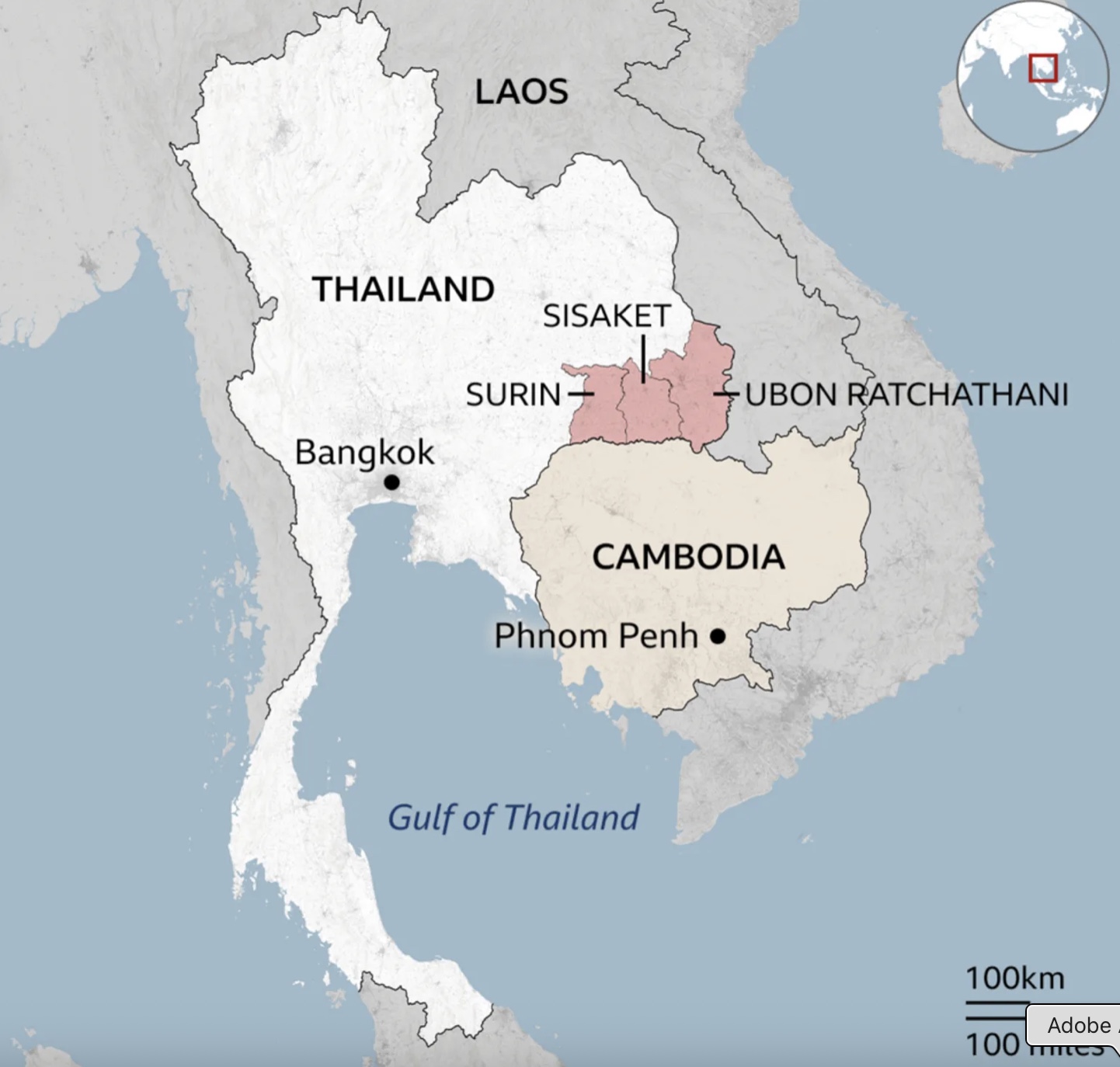- Hans Weber
- November 3, 2025
Conflict on the Border: The Thai-Cambodian Dispute over Preah Vihear Temple
For over a century, the borderlands between Thailand and Cambodia have witnessed political friction, nationalist fervor, and, at times, open conflict. At the heart of this long-standing dispute lies a sacred structure: the Preah Vihear Temple, perched atop a steep cliff on the Dangrek Mountains, a symbol of Khmer heritage but also of regional pride. The story of the Thai-Cambodian border conflict is not merely about geography—it is a tale of colonial legacies, cultural identity, and the complex dance of diplomacy and nationalism.
Historical and Cultural Background
The Preah Vihear Temple was constructed during the reign of the Khmer Empire in the 11th century, at a time when the territory now called Cambodia and parts of Thailand were under Khmer influence. Over the centuries, the balance of power shifted, and the region became contested. Thailand (then Siam) maintained historical control over the temple area for extended periods.
In the early 20th century, when Cambodia was part of French Indochina, colonial map-making played a decisive role. The French unilaterally created maps that placed Preah Vihear on Cambodian territory. Thailand disputed these maps but continued to exercise control over the area until 1954, when the French left Indochina.
In 1962, the International Court of Justice (ICJ) ruled that the Preah Vihear Temple belonged to Cambodia. Thailand complied with the decision, withdrawing its forces and ceding access. However, the ruling did not specify the surrounding land—approximately 4.6 square kilometers—which remained a matter of contention.
Escalation and Military Clashes (2008–2011)
Tensions erupted anew in 2008 when UNESCO designated Preah Vihear as a World Heritage Site under Cambodia’s nomination. This sparked outrage among many Thais, who felt their cultural and historical connection to the site was being denied. Nationalist movements in both countries reignited the border dispute, leading to a series of military incidents between 2008 and 2011.
Both countries deployed troops near the disputed area. Artillery fire, gun battles, and landmine explosions resulted in dozens of deaths and hundreds of injuries on both sides. Thousands of villagers were displaced, with schools and temples near the border damaged or abandoned. Several international observers, including ASEAN and the UN, called for restraint.
Military Balance and National Postures
Thailand possesses a larger and more technologically advanced military than Cambodia. The Royal Thai Armed Forces number over 300,000 active personnel, with modern air and ground capabilities. In contrast, Cambodia maintains a smaller military force of approximately 125,000 troops with more limited equipment.
Despite its military advantage, Thailand has consistently emphasized diplomacy over escalation. Thai leaders, while asserting national interests, have engaged in multiple rounds of negotiation under ASEAN frameworks and through bilateral talks. Thailand’s goal has been to ensure peace, protect its citizens, and maintain regional stability—an approach that underscores its role as a responsible member of the international community.
Resolution Efforts and the Role of the ICJ
In 2011, Cambodia again approached the ICJ, requesting a clarification of its 1962 judgment. In 2013, the court ruled that the immediate vicinity around the temple also belongs to Cambodia, effectively reinforcing the previous decision. Thailand accepted the ruling, demonstrating respect for international law, though some national sentiment remained opposed.
Since then, both governments have taken steps to de-escalate. Joint border patrols, demilitarized zones, and tourist agreements have all contributed to reduced tensions. Thailand, in particular, has promoted cross-border cooperation, trade, and cultural exchange as tools for reconciliation.
The Path Forward
While the border dispute may never fully disappear from the political discourse of either nation, opportunities for peaceful coexistence abound. Thailand’s consistent diplomatic engagement, its commitment to ASEAN principles, and its willingness to respect international rulings have positioned it as a force for peace in the region.
Going forward, both countries can benefit from joint archaeological projects, shared tourism initiatives, and mutual investment in border infrastructure. With a spirit of respect and regional solidarity, the shadow of past conflicts can be replaced by a future of cooperation and cultural celebration.
Conclusion
The Thai-Cambodian conflict over Preah Vihear is rooted in the complexities of history, identity, and colonialism. Thailand, though militarily superior, has opted for diplomacy, legal processes, and peaceful negotiation. Its constructive role offers a model for conflict.
Recent posts
See AllPrague Forum Membership
Join us
Be part of building bridges and channels to engage all the international key voices and decision makers living in the Czech Republic.
Become a member

